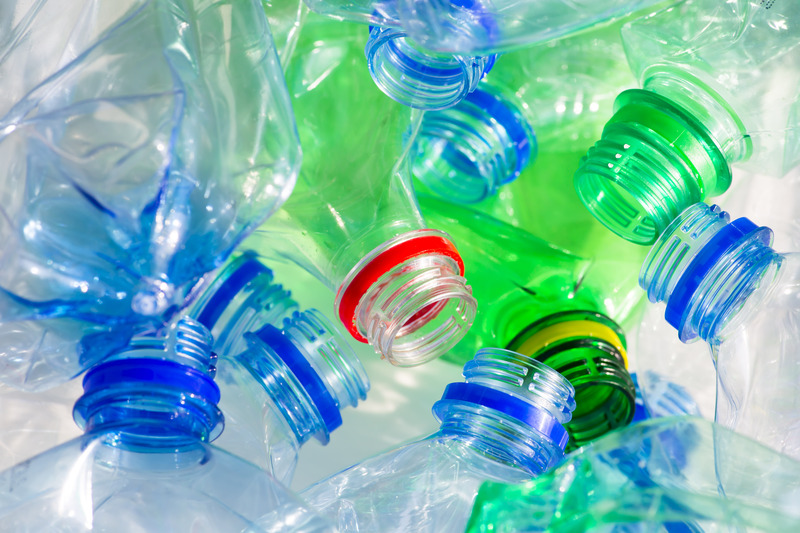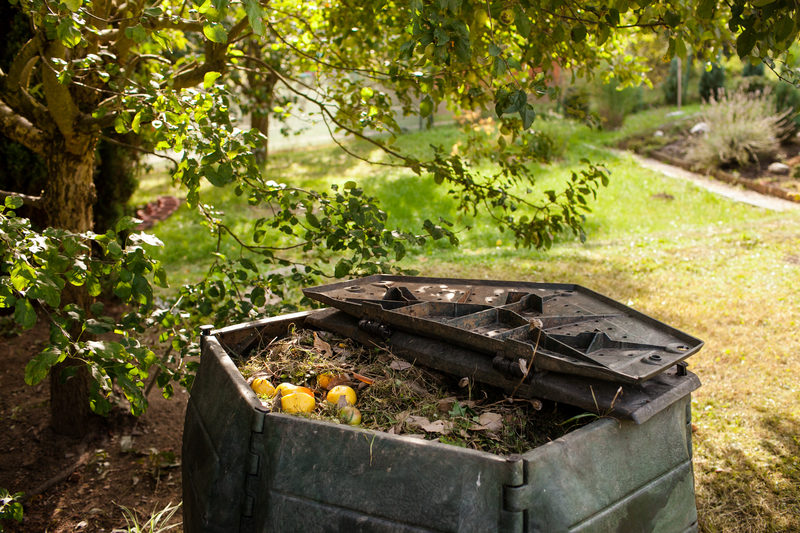A Step-by-Step Guide to Responsible PPE Waste Disposal
Personal protective equipment (PPE) has become an essential part of modern life, especially in healthcare, industry, and during pandemics. However, the increased consumption of masks, gloves, gowns, and face shields has led to the next big environmental challenge: PPE waste disposal. Ensuring that PPE is disposed of responsibly is crucial not only for public health, but also for environmental protection and sustainable living.
In this comprehensive guide, we'll walk you through every step of responsible PPE waste management--from understanding its impact, to best practices for disposal, to advanced tips for reducing your PPE footprint. Whether you are an individual, business, or facility manager, these practical steps will help you contribute to a cleaner, safer world.
Why Responsible PPE Waste Disposal Matters
- Environmental Impact: Improperly discarded PPE ends up in landfills, oceans, and natural habitats, causing pollution and threatening wildlife.
- Public Health Risks: Used masks, gloves, and gowns could carry pathogens and pose a risk to sanitation workers and the public.
- Sustainability: With billions of PPE items being used daily, responsible disposal helps reduce carbon footprints and conserves resources.
- Regulatory Compliance: Proper PPE waste management ensures you're following local and national waste disposal regulations.

Types of PPE and Their Waste Categories
Understanding the different kinds of personal protective equipment and their appropriate waste streams is the first step to responsible disposal.
- Disposable Masks and Respirators (surgical masks, N95s)
- Single-use Gloves (latex, nitrile, vinyl)
- Protective Gowns and Aprons
- Face Shields and Goggles
- Disposable Shoe Covers and Caps
Each PPE item may fall under general waste, hazardous waste, or medical waste categories depending on its use.
Step 1: Collecting and Segregating Used PPE
Develop a Collection Plan
Start by establishing a clear protocol for collecting used PPE. This involves:
- Identifying designated collection points (especially in healthcare, educational, and office settings)
- Educating users on proper disposal to prevent contamination and mixing with recyclables
- Providing clear signage near PPE disposal bins
Separate PPE by Waste Type
Not all PPE waste is identical. Follow best practices by:
- Segregating used PPE that has been in contact with infectious materials and non-infectious PPE.
- Using color-coded bins for easy identification: red/yellow for potentially infectious waste, black/grey for general non-hazardous PPE waste.
- Never mixing PPE waste with regular recyclables or compostables.
Step 2: Storage and Safe Handling of PPE Waste
Use the Right Containers
Immediate and correct containment drastically reduces the risk of contaminating the environment or spreading infection. Always:
- Use leak-proof, puncture-resistant bags or bins, preferably with secure lids.
- Clearly label containers as "PPE Waste Only."
- Place bins far from high-traffic or food preparation areas.
Train Staff and Users
- Provide regular training on proper PPE handling and disposal procedures to all staff and facility users.
- Emphasize the hand hygiene protocol before and after handling PPE waste.
Step 3: Transporting PPE Waste Safely
Internal Transport
- Minimize manual handling of PPE waste to prevent accidents or contamination.
- Use dedicated carts or trolleys for transferring waste to collection points.
External Transport
- PPE waste should only be handled by licensed waste management providers when moved offsite.
- Document all waste transfer and disposal activities for regulatory purposes, tracking the quantity and type of PPE materials.
Step 4: Final Disposal of PPE Waste
Best Practices for Final Disposal
There is no one-size-fits-all approach, as responsible PPE waste disposal depends on local laws and infrastructure. However, key steps include:
- Incineration: Especially for infectious or hazardous PPE. Incinerators operated by certified facilities ensure high-temperature destruction of pathogens and reduce environmental pollution.
- Landfilling: Used for non-infectious PPE waste. Ensure the landfill is properly lined and managed to prevent leachate and other environmental hazards.
- Autoclaving and Sterilization: Autoclaves can disinfect certain PPE waste, reducing pathogen risk before further processing or disposal.
- Recycling (where viable): Some hard plastic PPE components (e.g., face shields) may be recyclable if completely disinfected and accepted by a recycling program.
- Energy Recovery: Advanced waste-to-energy plants can safely convert PPE waste into usable energy, reducing overall landfill burden.
Do's and Don'ts of PPE Waste Disposal
- Do follow all local regulations concerning hazardous and infectious waste.
- Don't flush masks or gloves down toilets--they can clog systems and pollute waterways.
- Do double-bag highly contaminated materials to avoid leaks.
- Don't mix used PPE with household recyclables or regular trash.
Step 5: Reducing and Minimizing PPE Waste
Consider Sustainable Alternatives
- Opt for reusable PPE (washable cloth masks, reusable face shields) where possible and safe.
- Choose PPE made from biodegradable or compostable materials to lessen environmental impact.
Optimize Usage
- Avoid unnecessary overuse of single-use PPE by following guidelines on when and where protection is truly needed.
- Encourage bulk purchasing and centralized distribution to reduce packaging waste.
E-waste for PPE with Embedded Electronics
- Some advanced PPE includes batteries or sensors. Dispose of these via certified e-waste channels to recover valuable materials and prevent hazardous chemical leaks.
Regulations and Guidelines for PPE Waste Management
- The World Health Organization (WHO) provides comprehensive recommendations for infectious PPE waste management.
- Environmental Protection Agency (EPA) and Occupational Safety and Health Administration (OSHA) offer region-specific guidance for safe handling and disposal of PPE in the United States.
- Many countries and local authorities have their own legally mandated PPE waste protocols. Always comply with local waste sorting and management laws.
Tip: Check with your local waste management facility for the most current and applicable PPE disposal instructions.
Innovations and Future Trends in PPE Waste Management
As the world becomes more aware of the environmental externalities of disposable PPE, innovation is making waves:
- Biodegradable PPE: Startups and manufacturers are inventing masks and gloves that break down naturally in compost or soil.
- PPE Recycling Programs: Specialized facilities can sanitize and repurpose some PPE, turning waste into raw materials for new products.
- Energy Recovery Solutions: Modern waste-to-energy plants and pyrolysis achieve safe disposal of infectious waste while generating electricity.

Frequently Asked Questions About Responsible PPE Waste Disposal
-
Can PPE such as facemasks and gloves be recycled?
*Generally, no--most single-use PPE is not designed for curbside recycling streams due to contamination risks. However, some programs specialize in the safe recycling of cleaned, hard plastic PPE components.* -
What should I do with used PPE at home?
*Double-bag your PPE waste and place it in the general trash. If items are heavily soiled (used for infection prevention), consult local authorities for hazardous waste options.* -
Is it safe to dispose of PPE waste with regular household garbage?
*If PPE has not been exposed to infectious materials, most municipalities recommend disposing of it with general waste, unless local provisions state otherwise. Always prevent access by children or animals.* -
How can healthcare facilities safely manage PPE disposal?
*By implementing a robust PPE waste segregation plan, using color-coded bins, training staff, and engaging licensed medical waste disposal contractors.* -
What are the risks of improper PPE waste disposal?
*Environmental pollution, potential spread of disease, blocked sewage systems, and danger to sanitation workers and wildlife are major risks.*
Conclusion: Make PPE Waste Disposal Responsible and Routine
The responsible disposal of PPE waste is not just a matter of compliance -- it is a civic and environmental duty. By embracing the right collection, segregation, and disposal procedures, we can curb the negative impacts of PPE waste on our communities and planet.
Equip yourself, your staff, or your family with the knowledge and tools needed for responsible PPE management. By following this step-by-step guide, you help ensure that safety for people does not come at the cost of our ecosystems.
Start implementing these best practices today, and help build a safer, greener future for everyone!
